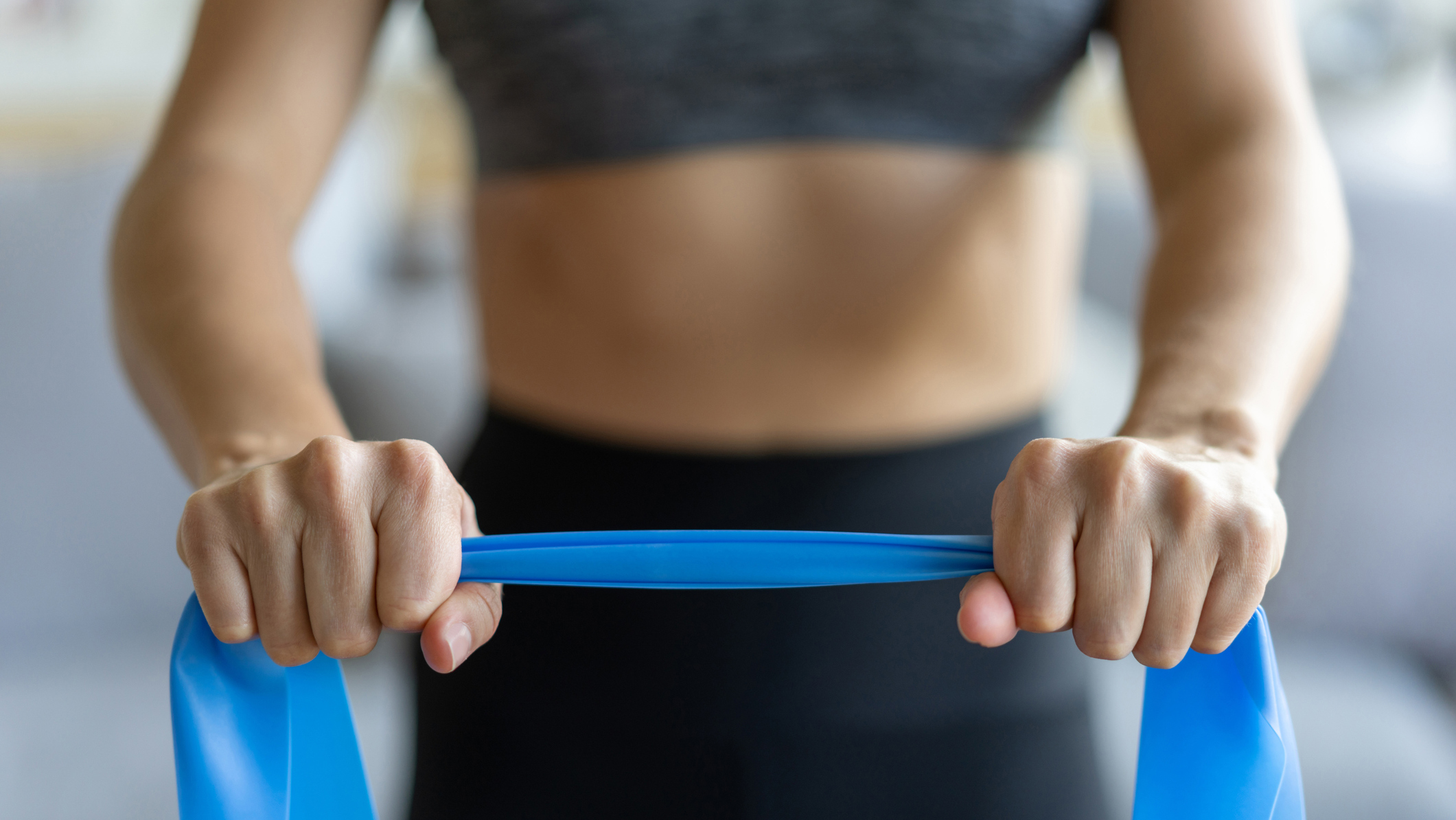How to clean resistance bands now you’re working out at home
Now's not the time to be letting that sweat fester

If you want to know how to clean resistance bands, read on...
Exercising at home has blown up in recent months--almost as fast as pretty, printed face masks. Without easy access to a gym, or fitness studio, we've had to make do with bodyweight exercise classes via Instagram, Zoom, YouTube and the rest. Without the gym's endless shiny machines, many people have cracked out the credit cards and invested in home equipment to help boost their workouts.
- Upgrade your home workout with the best resistance bands for women
Light, small and easy to store, a resistance band is the perfect piece of at-home kit - as long as you don't pack it away and let it fester. The humble band is the ideal way to make your muscles work harder, for added strength and tone. Whether latex or fabric resistance bands, they’re affordable and easy to store.
But just like other exercise equipment - such as dumbbells and, even, the best yoga mats - it’s important, now more than ever, to ensure you clean them on a frequent basis. “This should be a regular occurrence as they come in contact with your skin and your sweat every time they’re used,” explains David Wiener, training specialist at fitness app Freeletics.
Indeed, before this year, when the ‘rona was only uttered within the deepest echelons of the scientific community, research found that treadmills, weight machines and other common gym equipment, are generally riven with bacteria and other infectious germs. Due to their snug contact with our bodies, resistance bands are likely to be just as bad.
And while your local gym is responsible for keeping their resistance bands as fresh as can be, it’s down to you to stay on the case of the cleanliness of the one stuffed in your sock drawer (#guilty). Read on to find out exactly how to clean resistance bands.
How often should I clean my resistance band?
Firstly, you don’t need to clean it after every use. Phew, we hear you cry.
“If you're using your band yourself and not sharing it with anyone else, when working out, you can use it a couple of times before needing to clean it,” explains Katie Anderson, head of training at FLY LDN.
That’s unless you're sharing your equipment with people at home - in which case this should be done after every session.

How to clean a latex resistance band
“You can clean latex bands with skin-friendly anti-bacterial wipes,” notes Anderson. You know, those ones you’ve probably had lying around in the kitchen for months alongside the hand gel. Or even better, Wiener suggests: “Wiping them down with a damp cloth or towel”. So there’s no excuse.
But, if you have more time and, let’s face it, you probably do given umm external factors, Wiener advises, “put your latex bands in a bucket with warm water, add some soap and hand wash them.”
Is your resistance band stuck together after washing it?
“A good trick is to use talcum powder on it,” reveals Anderson. (*Makes a serious mental note*). “Once washed you can use a towel to hand-dry the band or, if you like, you can also let it air-dry away from direct sunlight,” recommends Wiener. Simple.
How to clean fabric resistance bands
Don’t worry, we haven’t forgotten about fabric bands. “You can wash them in a bucket of warm water and soap, gently hand-washing and wringing dry”, says Wiener.
But, to get fabric bands super clean…
“You can throw [fabric bands] in the washing machine,” explains Wiener. “It’s best to wash them with a gentle detergent on a low setting.” This ensures the band retains its elasticity - or it won’t work your muscles so hard. Let it air-dry away from direct sunlight.
Latex or fabric resistance bands: which is easiest to clean?
The stark differences in the cleaning process between them does beg the question of which you should choose if you’re in the market for one.
“Latex is best suited to be cleaned thoroughly as it’s effectively a sealed object that stops dirt and bacteria from being harboured,” points out Jay Wall, a PT specialising in HIIT. “Using a fabric resistance band may well be a good option for personal use, but it could be impractical in any kind of communal setting because it would need to be regularly machine-washed as it has the potential to hold bacteria and viruses.” And we all know the consequences of those...
Lauren is a freelance writer and editor with more than six years of digital and magazine experience. Most recently, she has been the Acting Commissioning Editor of Women's Health—where she co-produced the Going For Goal podcast—and has previously also written news and features for titles including The Telegraph, Grazia, Stylist, Dazed, The Sun's Fabulous, Yahoo Style UK and Get The Gloss. She covers all aspects of lifestyle, specializing in health, beauty, and travel. Can't live without: oat milk lattes, new podcast episodes, long walks, and great skincare.